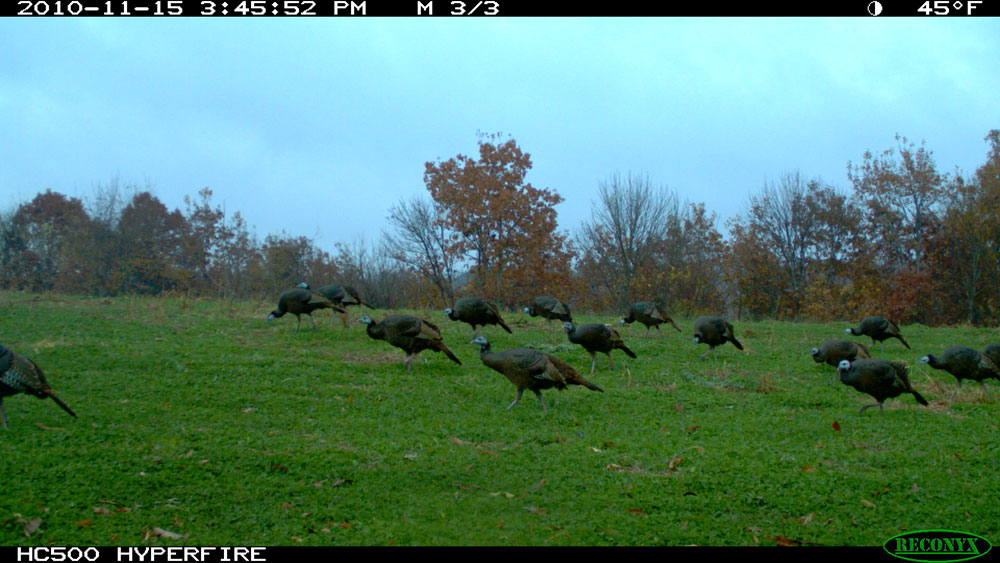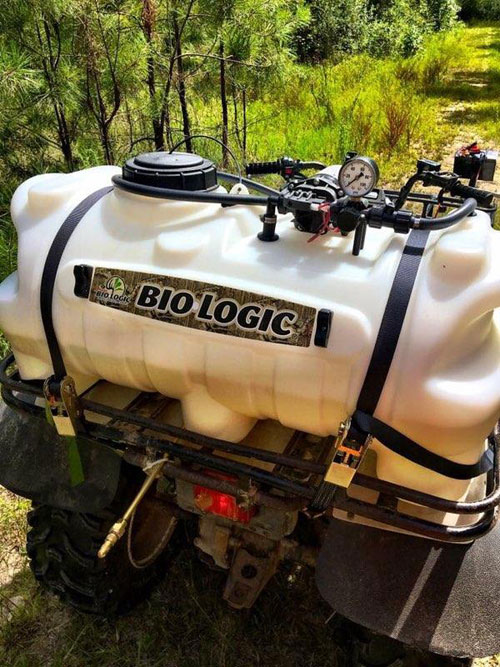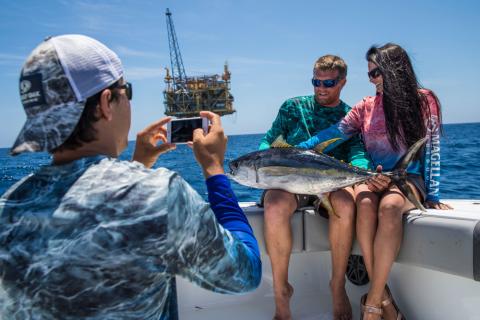Roger Guilian of Fairhope, Alabama, has worn Mossy Oak camouflage since 1998. Like many of us, Guilian belongs to a hunting lease, and his contains about 1700 acres. The property is owned by a non-profit land trust and is managed for timber. The forester takes care of when to thin the timber and when to burn.
As I’ve mentioned, our lease is primarily a deer lease, and for some time I was the only turkey hunter on the lease. One of the critical factors in planting food for turkeys is wild hogs and how they impact our plantings. We can’t plant chufas that turkeys love, because the wild hogs will locate the chufas and eat them up before the turkeys even find the chufas.
After our hunting club plants its green fields for deer, I’ll get a bag spreader of Mossy Oak BioLogic’s Non-Typical Clover and walk those food plots with a hand-cranked seed spreader. I’ll spread the clover seed over one corner or one small finger of the field. Clover is a productive food for both deer and turkeys. When the annuals that are planted to hunt over during deer season die off, the clover still will be in that corner of the field where I’ve spread it before hunting season. The clover really comes out strong the following spring and is ideal for turkeys.
 I’ve found that over-seeding your food plots with Mossy Oak BioLogic Non-Typical Clover can be very effective for locating and hunting turkeys. Three years ago, as soon as the food plots on our lease were planted with BioLogic’s Maximum, I came in and over-seeded a small portion of those fields with BioLogic’s Non-Typical Clover. Now three years later, that Non-Typical Clover still comes up every year and provides food and bugging areas for turkeys. Of course, it provides food for deer, too. After deer season ended, I returned and sprayed that half-acre of the clover with a grass herbicide that is perfect for maintaining clover. By killing all the weeds, the clover had no competition and could take in whatever moisture hit the ground.
I’ve found that over-seeding your food plots with Mossy Oak BioLogic Non-Typical Clover can be very effective for locating and hunting turkeys. Three years ago, as soon as the food plots on our lease were planted with BioLogic’s Maximum, I came in and over-seeded a small portion of those fields with BioLogic’s Non-Typical Clover. Now three years later, that Non-Typical Clover still comes up every year and provides food and bugging areas for turkeys. Of course, it provides food for deer, too. After deer season ended, I returned and sprayed that half-acre of the clover with a grass herbicide that is perfect for maintaining clover. By killing all the weeds, the clover had no competition and could take in whatever moisture hit the ground.
During the 2018 turkey season, I couldn’t believe how many turkeys were coming into that clover to feed and bug. I had three longbeards strutting for five or six hens almost every day. The turkeys only were in the half of the field where I’d planted that Non-Typical Clover. I’ve learned that if I spray the clover with the right herbicide and mow it, it will continue to produce both deer and turkey food for 4-5 years without having to be replanted.
One of the problems, when you belong to a hunting lease like I do, is that you don’t have any kind of control over when to, where to and how to plant crops for wildlife. However, you can supplement whatever your club is doing by investing some extra time most others won’t spend, spend some extra money that others won’t and create your own small hot spots and places to hunt that other hunters may not find. If you’ve taken pictures of deer and turkeys on the places you’ve created, then you’re reassured that what you’re doing is working. Even if you don’t take deer or turkeys at these spots, you’ll still get photos of deer using these areas at night. You’ll know you’re keeping those bucks close to your land and perhaps get a chance during daylight hours to take one. By adding the clover to a portion of a couple fields, you often can put the turkeys where you want them to be during turkey season, as well as provide an additional food source for the deer.
I’ve learned that I can be a GameKeeper on leased property and create more food and habitat for wildlife, separate from and in addition to what the majority of the hunters on the lease provide. Gamekeeping is fun. I learn so much more about wildlife by using this system of gamekeeping. I believe you will too.































